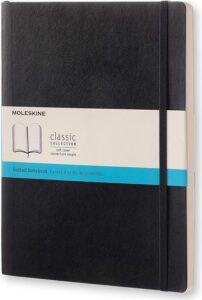Building up your taste receptors to rate your own coffee is all part of the journey to becoming a coffee connoisseur. But this takes time and remembering what works from memory is difficult even for the most seasoned professionals. One of the fastest ways to learn if you are just starting out, or if you are training as a professional barista, keeping a log of your recipes, as well as the characteristics of the resulting espresso is a great way to finely tune and optimise your drink.
If you are in a coffee shop or there are multiple people using the same beans and machine, then keeping a diary of what works is a great way to maintain consistency as different baristas come and go, or to reduce waste when changing between different beans. By creating a log of espresso recipes in the coffee shop for all baristas to work from, you streamline the process of dialling in, reduce customer waiting times, and reduce waste as the next barista isn't starting from zero again.
What to log in your Barista Diary
Depending on your chosen brew method, or the limitations of the espresso machine you are using, you may not be able to measure everything to the level of detail required. However, even tracking what you can will paint most of the picture it will form a great starting point.
- Coffee beans you are using and their roast date - You can include origin and altitude too
- Brew Date - this will you give a time since roasted to give you an indication of how this affects character
- Dose Size in grams - fundamental to consistency to measure with a quality set of scales no matter which brewing method we are using
-
Grind size - This could be a setting or a number on your grinder or you could analyse according to a coffee measuring tool
-
Brew time - In seconds, this could be the time you spend brewing in filter, or the total time to pull the shot for an espresso.
-
Drink size - Use the scales to measure the resulting espresso or filter coffee in grams
- Ratio - This will be the result of dose size and the drink size
-
Rating and review - You can use a simple number scale or use more descriptive analysis to include key features such as tasting notes or characteristics of the coffee puck.
This will help you create a consistent and delicious coffee, and as you revisit beans or roasters, you will be able to see at a glance what the best recipes were for that particular bean.
The idea will not be to track every single espresso you are making, but any time you need to change or tweak your recipe when dialling in, and start a new page in the diary for new beans, so in a sense, you are not using the date as the continuation, you change pages as you change beans, but that's just a recommendation and may not be your choice.
These are just guidelines for what you could be tracking, just making the effort to think about how you interact with coffee is an easy step to becoming a fully fledged home barista, no matter what your setup is and how much it cost you.
Buy Barista Diaries Online
Now the simplest is usually the best, just get yourself a nice notepad with weighty paper, keep it next to your home barista setup and just start recording. You'll be surprised how much it will benefit your journey. I love the Molskines, but I'm using what I have at the moment, and that just happens to be an old notebook from work. Waste not want not and all that.

Download a Coffee Logging app
There are plenty apps around that do this exact thing for you, but I have always found them limiting and may not align exactly with your setup, but can be helpful if it does. Here are the top Barista Journal Apps on iPhone;
